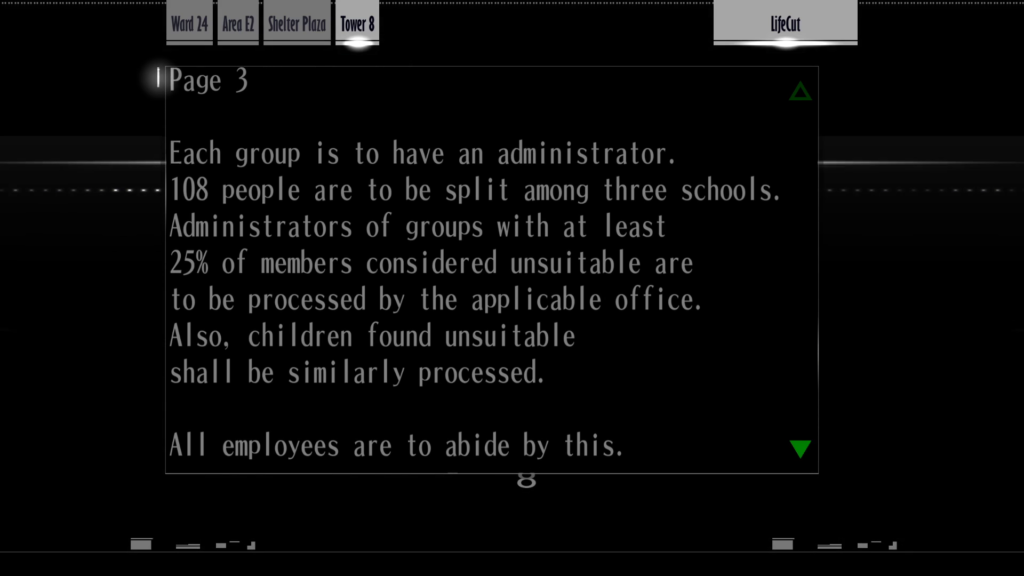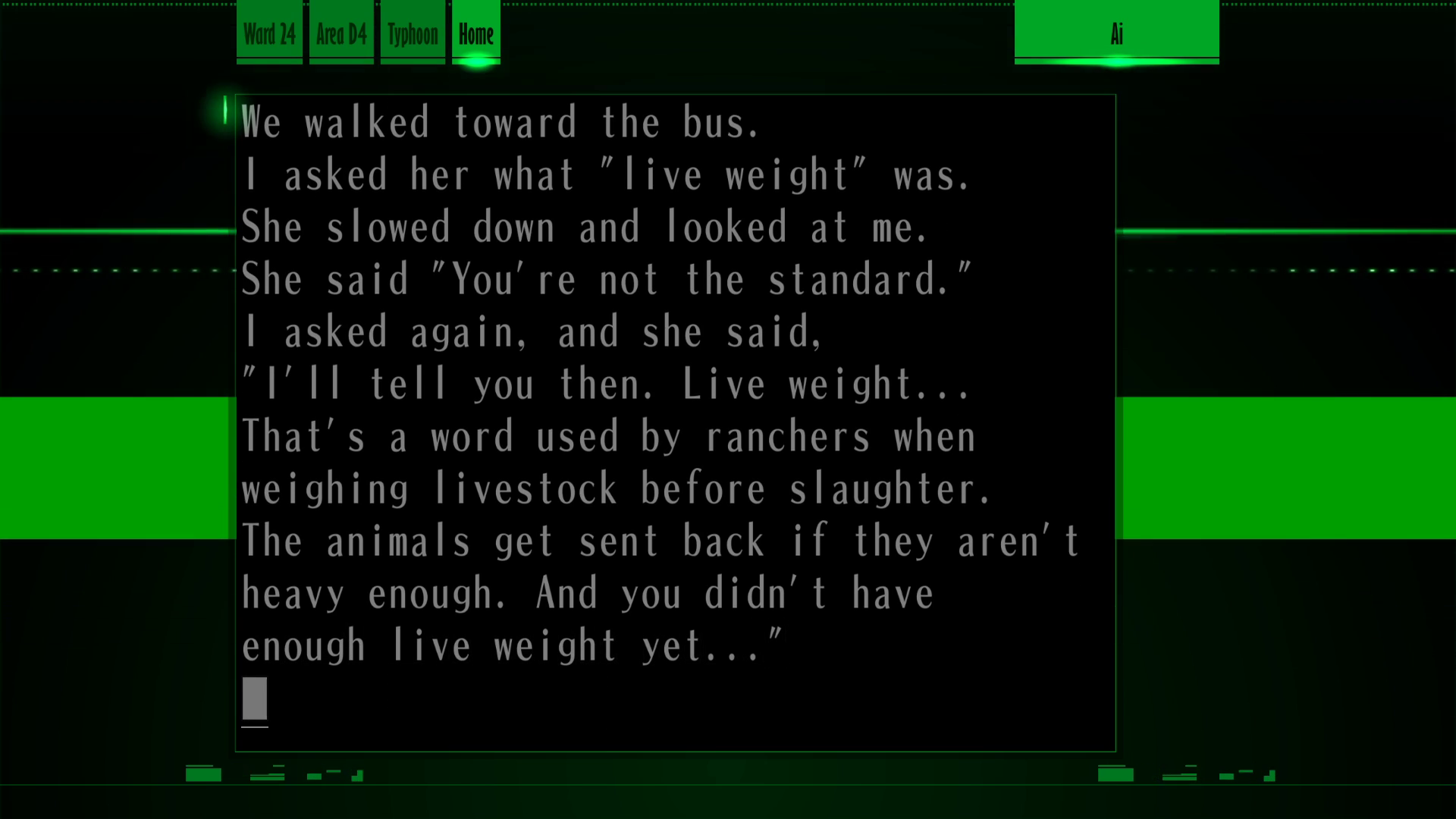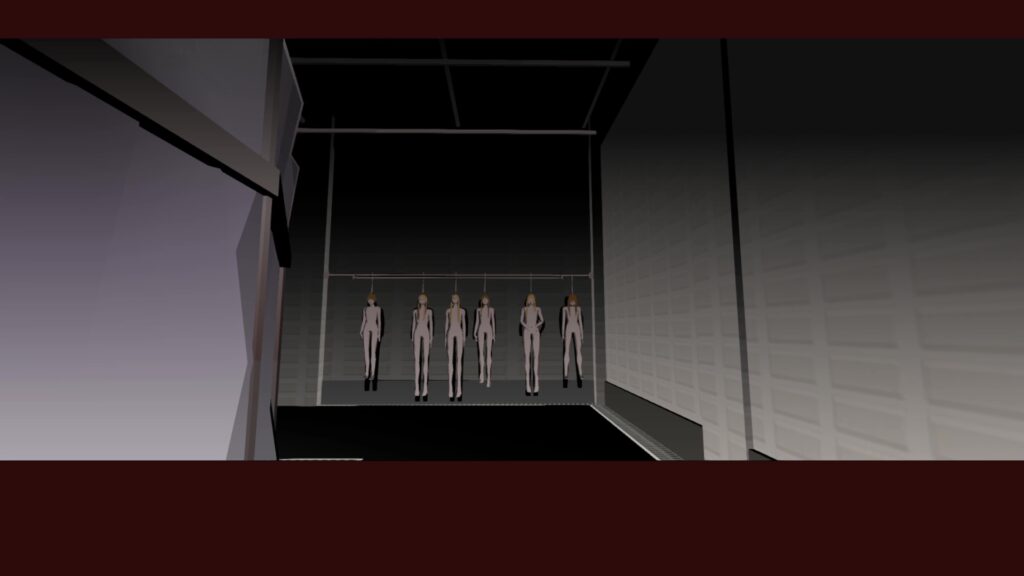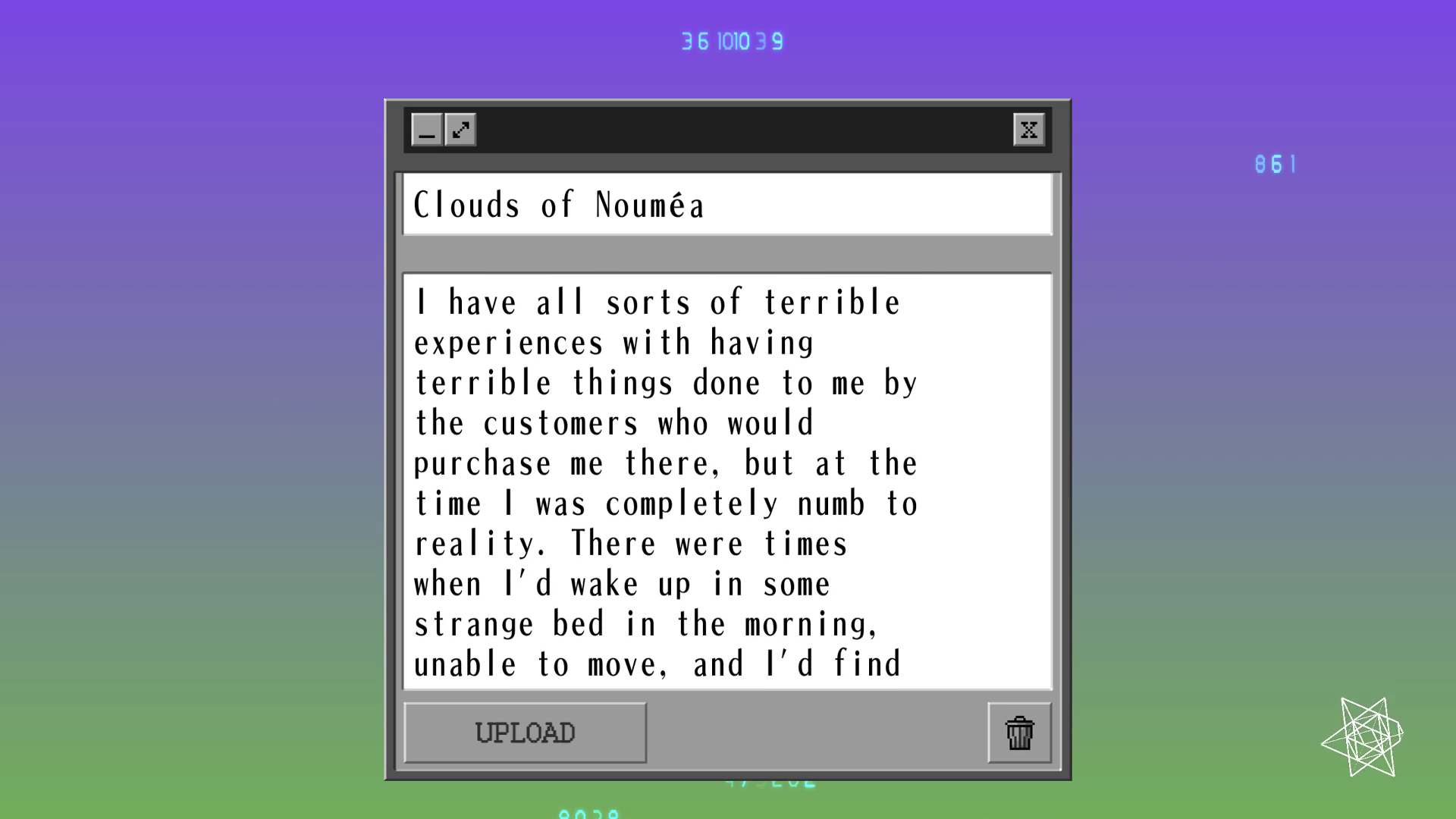
There is some inconsistency on how the syndicates attain the children for the program. According to Daigo’s investigation that Sakura discovers, the Kamui Maspro offered tax incentives to parents while concealing what was actually happening to the children. These are the “facts” of the relatively mundane Shelter Kids Policy Nakategawa describes in “Decoyman.” Daigo reports the Ayame Maspro involved just kidnapping girls. In either case, deception and coercion are central to the process. In the shelters, children are referred to with numbers in place of names. Recall the mentions of forced ocular surgery and keeping children still and silent in pitch darkness for fourteen hours at a time, in addition to routine mass executions, “processing,” of staff. Page 3 of the instructions adds, “Also, children found unsuitable shall be similarly processed.”

In “AI,” Tokio recalls children being treated as human cattle, shipped away to a slaughterhouse. This seems to be metaphorical, but he and other children are effectively cattle for eyeballs. In this metaphor, Tokio is spared the slaughterhouse because he is dropped from the program early after he tore his own eye out—for him, this grievous injury is preferable to the horrors of the Triangle Towers. The point is also forceful in the sequels: in killer7, ELBOW-associated agents, Curtis Blackburn and Pedro Montana, run literal slaughterhouses for children, while in The 25th Ward Meru repeats the image of the old men cutting up children for organs, though apparently does not mean this literally. Children and the adults they become are commodities to the ruling class of the 24 Wards.

Sexual abuse of the Shelter Kids is also implied. Nakategawa, signatory of the Ayame Maspro, consistently displays sexual interest in minors. While at the café Prussian, Enzawa shows a specifically sexual fixation on Kamui and Ayame, describing them in terms of mating animals: “Ayame was trying to give birth to Kamui’s child. But the self-preservation instincts of Kamui’s seed wouldn’t settle for Ayame alone as its garden. […] The self-preservation instincts of Ayame’s seed tried to leave behind only a single, definite line.” The sequels double down on this aspect. In “Encounter,” Curtis Blackburn, either an ELBOW agent or alternate universe analogue for one, rapes the abducted immigrant orphans in his “stock” with impunity. Travis Bell suggests Curtis uses them as sex slaves, and Kess Bloodysunday says, “I heard them crying. It must have been forced upon them. Poor girls.” In “Smile,” Kun Lan implies the Kamui in killer7, Emir Parkreiner, became death-filed after incestuous molestation.

Most explicitly, in The 25th Ward, the Shelter Kid Meru’s diary in “YOGORE” describes being sent directly from the shelters to a brothel, where she spends years as a child prostitute for men who “rent” her. She indicates that many other children from the Ayame Maspro were subject to sex trafficking and blames specifically “rich men,” the oligarchs: “Useless girls brought up in the Shelter, before becoming grown women, were cut up and sold to rental shops for rich men to pick up.” Note, again, the metaphorical treatment of Shelter Kids as cattle, to be “cut up and sold.”